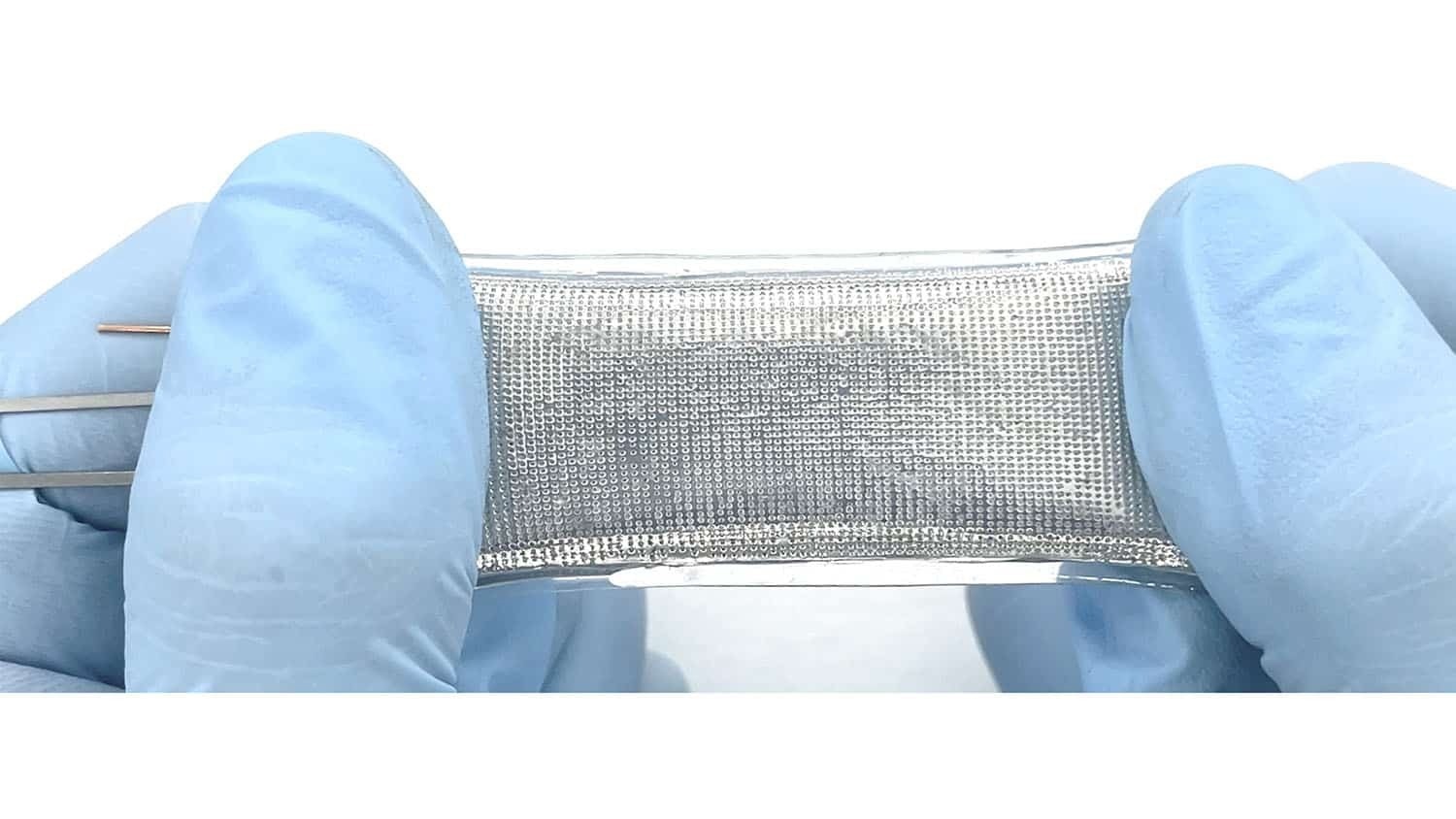Soft or flexible electronics are stretchable devices that facilitate next-generation electronic applications, which can be used across a diverse range of applications, including wearables for healthcare and well-being monitoring. Some are even finding novel use in alternative energy futures.

Image Credit: NC State/Michael Dickey
However, the materials typically used in these devices are not always best suited to protecting devices from intrusive gases or liquids. Thus, when it comes to developing flexible electronics to ensure functionality, creating a hermetic seal to preserve device safety and operation is essential.
This challenge has led an international team of researchers, which includes a team from North Carolina State University (NCSU), to develop an innovative method to create a material that is able to prevent liquids and gases from penetrating the material and protect vital components, including flexible batteries. The team’s findings were recently published in the February issue of the journal Science.
This is an important step because there has long been a trade-off between elasticity and being impervious to gases.
Michael Dickey, Camille & Henry Dreyfus Professor of Chemical and Biomolecular Engineering, NCSU
Elastic Alloy
Materials that are typically used for protecting electronics and keeping out liquids and gasses tend to be hard and rigid. However, as stretchable elastic materials are usually highly permeable, it can be rather tricky when it comes to creating the desired hermetic seal.
Nonetheless, the researchers at NSCU were able to put forward a solution that offers the desired elasticity as well as keeping liquids and gasses at bay. The method makes use of a eutectic alloy comprised of gallium and indium (EGaln).
At room temperature, this alloy sits in a liquid state, and its eutectic properties ensure the melting point of the material is lower than that of its basic core elements. The team was able to encase a thin layer of EGaln film within an elastic polymer to create the stretchy non-permeable material.
Microscale glass beads were used to line the inside layer of the polymer to prevent EGaln pooling in the liquid film. This creates what, in essence, is an elasticated alloy contained within a flexible bag or sheath that is able to prevent gases or liquids from penetrating its layers.
To see how effective the new material could perform, the researchers assessed the degree to which liquid contents were able to evaporate, as well as how well oxygen was retained in a sealed container made of the material.
We found that there was no measurable loss of either liquid or oxygen for the new material.
Tao Deng, Co-Corresponding Author and Zhi Yuan Chair Professor, Shanghai Jiao Tong University
The team demonstrated that the new material could be used as a soft seal for a stretchable heat transfer system and a stretchable battery – both of which require the use of volatile fluids as well as water and other organic fluids.
After further research, the team found that the battery’s capacity retention was around 72% after 500 cycles, and the sealed heat transfer system demonstrated increased thermal conductivity – at around 309 watts per meter-kelvin while strained and heated.1
However, despite its improved productivity, the team found that producing the stretchable material at scale could be expensive due to the costs of the materials involved in the construction of the liquid-filled elastic sheath.
The liquid metals themselves are fairly expensive… However, we’re optimistic that we can optimize the technique – for example, making the EGaln film thinner – in order to reduce the cost. At the moment, a single package would cost a few dollars, but we did not attempt to optimize for cost so there is a path forward to drive cost down.
Tao Deng, Co-Corresponding Author and Zhi Yuan Chair Professor, Shanghai Jiao Tong University
The next phase involves testing the limits of this new material further to determine if the material is even more effective than first thought.
While flexible batteries are one potential application for this new wonder material, the team claims that other devices using liquids or showing sensitivity to oxygen exposure will benefit from this using the new technology.
References and Further Reading
- Shipman, M. (2023) Researchers develop elastic material that is impervious to gases and liquids, NC State News. Available at: https://news.ncsu.edu/2023/02/elastic-material-impervious/
- Shen, Q. et al. (2023) “Liquid metal-based soft, Hermetic, and wireless-communicable seals for stretchable systems,” Science, 379(6631), pp. 488–493. Available at: https://www.science.org/doi/10.1126/science.ade7341
Disclaimer: The views expressed here are those of the author expressed in their private capacity and do not necessarily represent the views of AZoM.com Limited T/A AZoNetwork the owner and operator of this website. This disclaimer forms part of the Terms and conditions of use of this website.